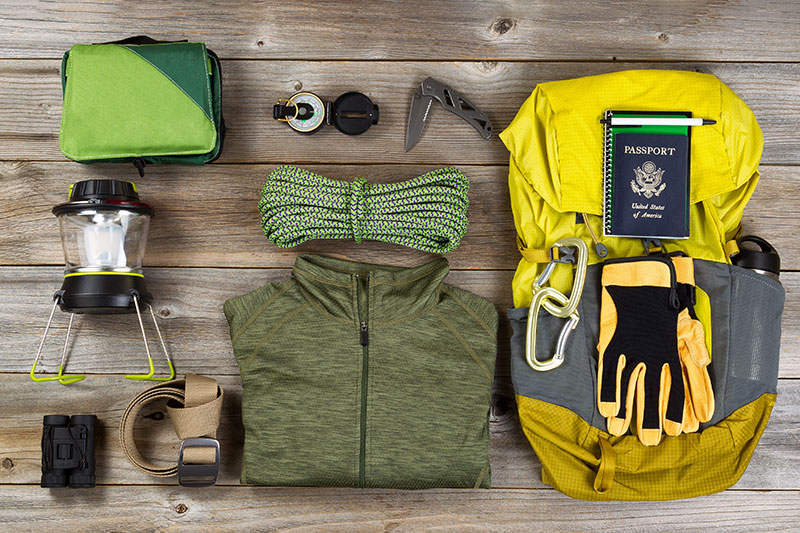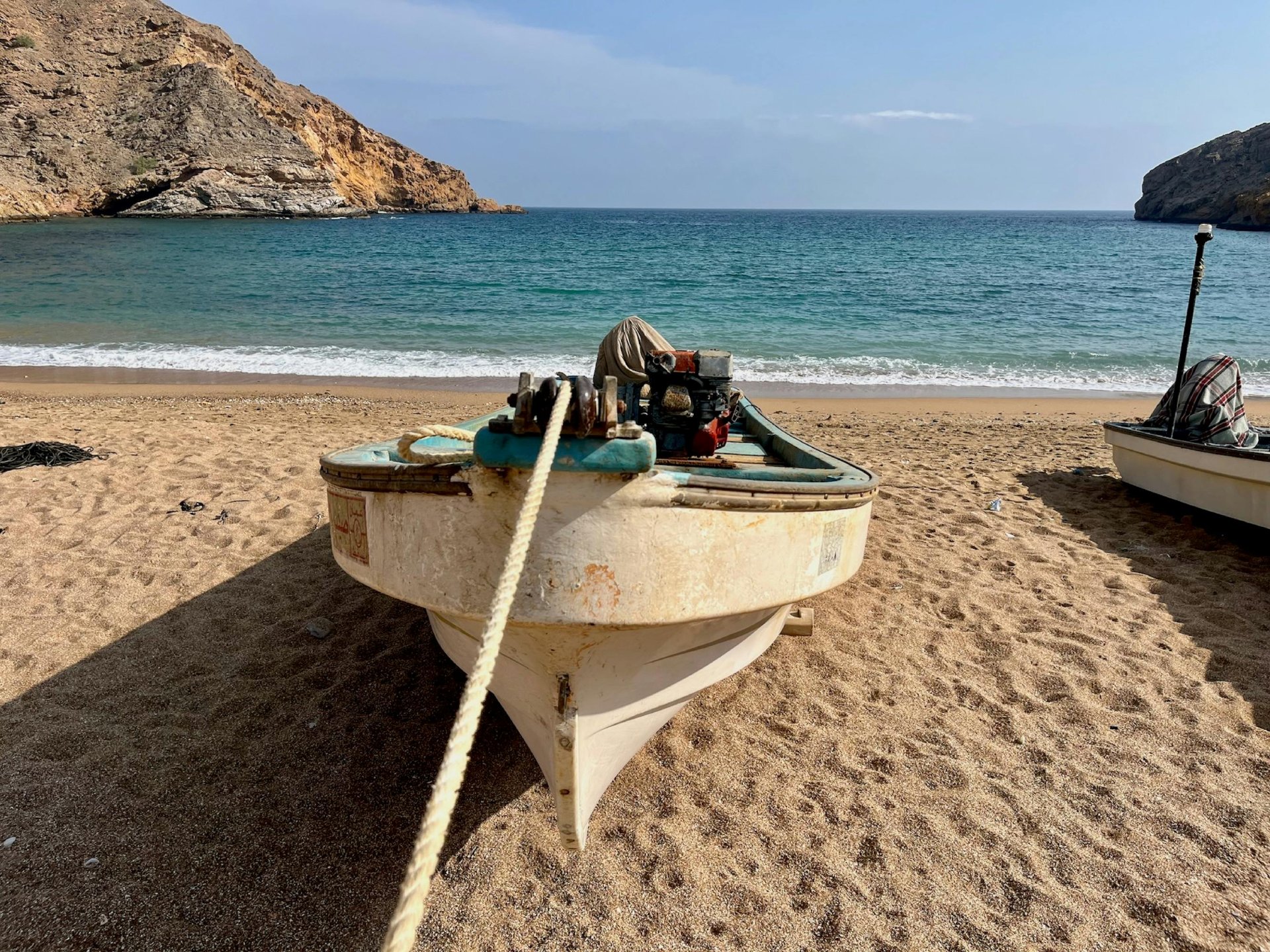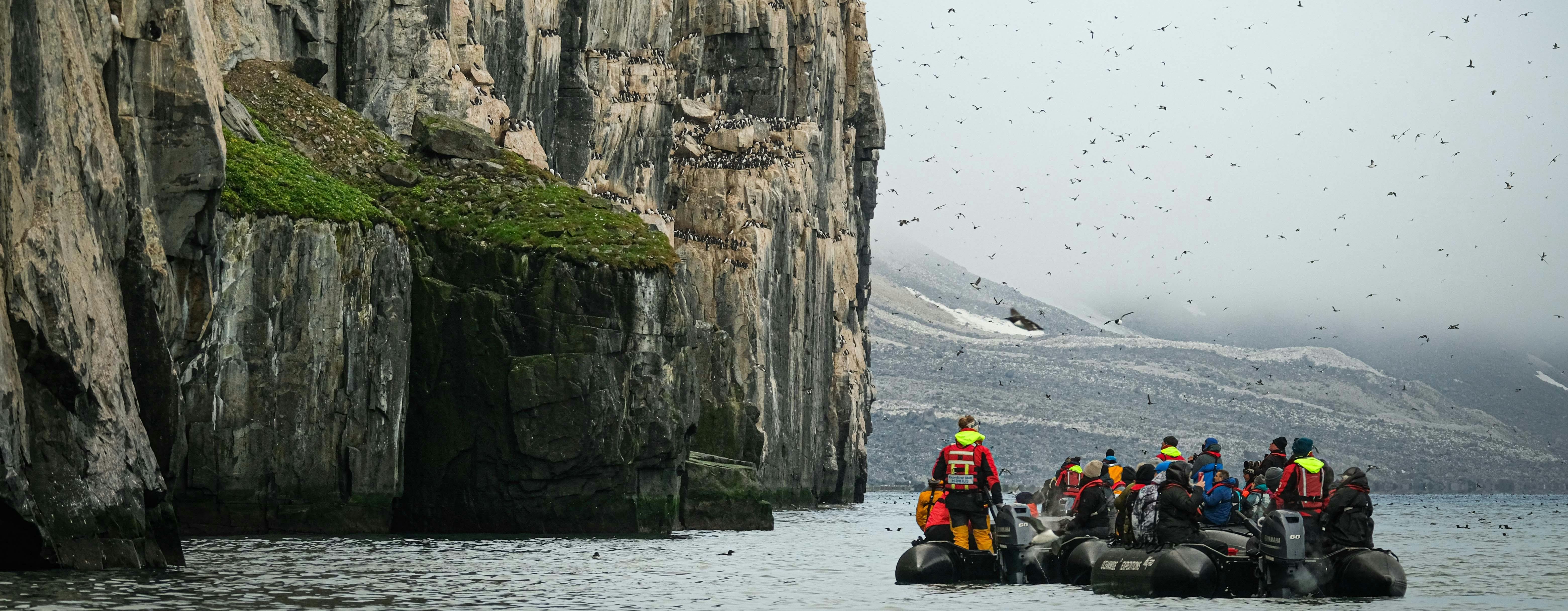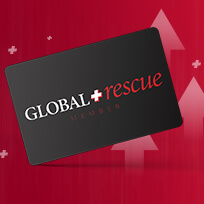Every day, Global Rescue’s travel health and security experts provide travel, health, safety, and security information for outdoor adventurers, families with children, students, and business travelers. Going into the backcountry? Be sure to bring your wilderness first aid kit. Taking a fishing trip? Make sure you have these fishing first aid items with you. Traveling to an area prone to winter weather? Pack items you might need for blizzard survival.
But, for the first time, Global Rescue has compiled the ultimate world travel safety kit, which combines safety equipment, first aid items, and necessary gear for all types of travel — business, solo, family — and activities and circumstances: mountain biking, business conferences, fishing, family excursions, hiking, kayaking, climbing, cold weather camping and more. We’ve asked our medical operations and security experts, our Safe Travel partners, and our members for their go-to gear, listed here from A to Z.
The list is not all-inclusive. Every traveler is different. Safe Travel partner travelhelix swears by these travel items: baby wipes (“an easy way to keep clean on the go”), sunscreen, bug spray, blister protection, and a quick-dry towel. But you don’t want to overpack — carrying items you may not need or don’t know how to use.
“Building a travel kit is a dynamic process,” said Jeff Weinstein, medical operations supervisor at Global Rescue. “You’ll need to build it to the destination as well as the activity. If you plan on high-risk activity, like mountain climbing, you’ll want to add more trauma items. If you’re visiting a tropical destination, you may want to add sunblock or bug spray.”
Weinstein encourages travelers to take only what they need and pack as lightweight as possible. “You can overprepare,” he said. “You don’t want your travel kit to become just another thing you have to carry with you.”
“Everyone has a different idea of personal essential items to pack for a fly-fishing trip you are taking, no matter where, fresh or saltwater,” said Patrick Pendergast, director of international travel at The Fly Shop and Global Rescue Safe Travel partner. Pendergast provided many of the items fly fishers might need in their adventure travel kit in this comprehensive guide. “These items are in addition to what is normally packed in your kit — items that might just save another person’s life, or maybe yours.”
Alcohol-based Hand Sanitizer
Long before the coronavirus pandemic, hand sanitizer was the best way to wash your hands without soap and hot water. According to the CDC, effective hand sanitizer is at least 60% alcohol.
If you’re traveling, it’s portable and easy to pack — and now the Transportation Security Administration allows passengers to bring up to 12 ounces of liquid hand sanitizer in carry-on bags.
Batteries
Pack extra batteries for everything: communication devices, cameras, radios, headlamps, and flashlights, to name a few. If you’re driving, consider packing a portable jump-start battery pack, which typically has USB plugs for charging phones or tablets. If you’re in the backcountry, pack a solar charger you’ve tested before the trip. If you’re flying, “it is important to note certain types of batteries, such as Lithium-Ion batteries, cannot be checked and must be carried on,” Weinstein said.
Communication Devices
Global Rescue suggests having two forms of communication available in the backcountry: cellular and satellite. “From a Global Rescue perspective, a good communications device is key or members won’t be able to access our services,” said Dan Stretch, operations manager at Global Rescue.
You’ll also need a communications plan: informing someone back at home where and when you are going and how to get in touch with you. This plan must include what to do and who to contact if you don’t return as planned. Always update this person if your plans change.
Duct Tape
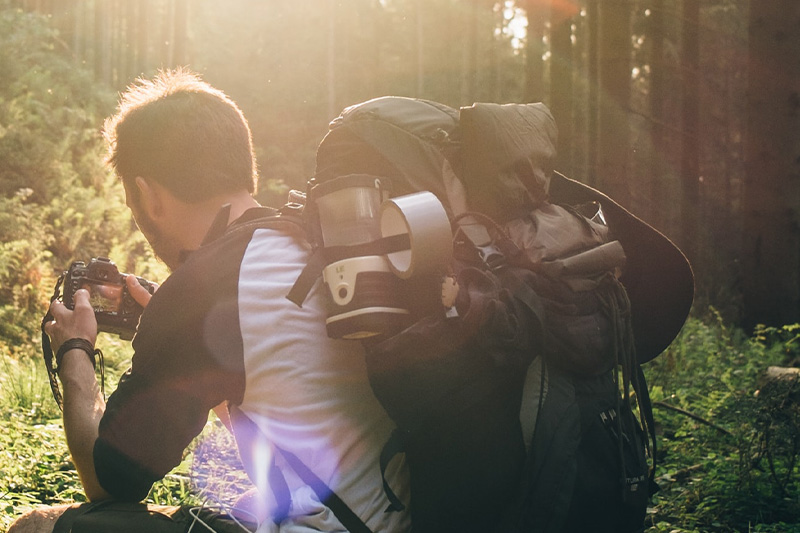
Did you know you can use duct tape to extract a splinter?
“Duct tape is about the handiest adhesive ever invented and the uses are endless,” said Pendergast. “I once watched a bush pilot in Alaska repair the skin on an airplane wing that got gnawed on by a bear and flew us out. In a pinch, you can use it to repair a torn wader or bandage a blister.”
Scott Mitcham, medical operations senior specialist at Global Rescue, advises using it sparingly on the skin, especially if you are older. “Duct tape has an extremely aggressive adhesive. One should take care with regards to applying duct tape to their skin as it can rip the thinner skin of elderly patients,” he said.
Energy Bars
Whether you’re road-tripping, camping, hiking, or traveling on business, it’s always a smart idea to pack some extra food. Make sure you have a day’s worth of rations if you’re in the backcountry; Global Rescue staff recommend packing a few energy bars. Women’s Health notes energy bars are designed to replenish burned calories and you should look for ones with nuts, oats, dried fruits, and at least 5% of protein to curb hunger.
Eye Protection
Snow blindness, a painful eye condition caused by overexposure to the sun’s ultraviolet (UV) rays, doesn’t occur only in the polar region. It can affect anyone enjoying snow sports — hiking, snowshoeing, skiing, and snowmobiling — or water sports — rafting, boating, kayaking, or canoeing — in the bright sun. Be sure to pack and wear eye protection, like wraparound sunglasses with photochromic lenses (lenses that darken upon exposure to light) and block out 100% of UV rays.
Travelers to a desert area should consider wraparound goggles. “While sunglasses look cool in your vacation photographs, they will not protect your eyes from blowing sand. Goggles, either those designed for desert wear or skiing, are the best protection,” Dr. Edward Otten, past president of the Wilderness Medical Society, a Global Rescue Safe Travel partner, wrote in his article, Beyond the Ten Essentials.
Electrolyte Powder
“You don’t just need to drink water when you are dehydrated; you need to replace your electrolytes,” said Weinstein.
Harding Bush, associate manager of operations at Global Rescue, recommends packing a powder. “The powder is lighter than bringing an electrolyte beverage and easy to add to your filtered water,” he said.
First Aid Kit

Pack useful items in a small, waterproof container so you’re prepared for the frequently encountered issues — blisters, stomach upset, scrapes, and cuts — on a trip. You can start with a commercial first aid kit, but then personalize contents to match your adventure travel needs. You may not need a headlamp if you’re day hiking on a local trail, but you might want one if you are camping for a week in the great outdoors.
“Where we go, you can’t walk out,” said Amy Ray, president of The Sisterhood of the Outdoors, a company dedicated to creating opportunities for women to hunt, fish, and learn to shoot. “Although we’re most often dealing with cuts and scrapes — a slip of a knife is the most common injury — it’s important to have the basics with you at all times.”
Traveling near or around water? Weinstein recommends vacuum sealing your first aid kit to protect it from water exposure.
“I would vacuum seal a medications module, a bandaging module, etc. You can cut a little triangular notch in the side to make it easier to rip open when needed,” he said. “Then I would vacuum seal the entire bag. This way if you open one module for something everything else is still protected. I would also carry extra zip-lock bags to seal an opened module.”
Gloves
Gloves will protect your hands from heat or cold, bites and cuts, and provide extra grip for outdoor activities. Match your destination (hot or cold) and location (land or water) with the appropriate glove options: fleece gloves, wool gloves, sun gloves (“When it’s buggy,” said Danny Frank of Frigate Travel), or fingerless gloves. You should also include medical-grade gloves in your first aid kit.
Headlamp
A headlamp leaves your hands free to do other things, such as to render aid or perform survival tasks unhindered.
“Light is the primary obstacle to proceeding safely. Whether you choose a battery-powered headlamp or something you can charge via USB, ensure you have backup power on hand. Consider carrying a secondary light source in addition to your primary headlamp,” Conrad Lucas writes on Skyblue Overland’s blog.
Iodine Tablets
Clean drinking water is crucial. There are many different techniques to purify water: UV rays, boiling, and chemicals, including iodine tablets. The benefits of iodine tablets: they are portable, easy to use, and will kill most of the bacteria, viruses, and protozoa swimming around in the water.
“Purification is important, but so is filtration,” Weinstein said.
Dave Keaveny, a medical operations specialist for Global Rescue, agrees. “I use a Sawyer filter 99% of the time,” he said. “If I am very concerned about the water, I will also use iodine, or I will boil it. But people with shellfish allergies cannot use iodine tablets.”
Jacket
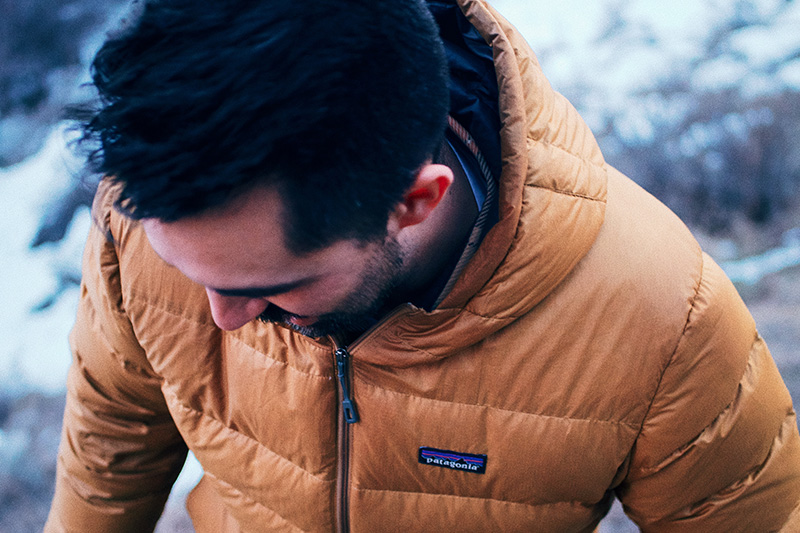
“It’s easier to stay warm than get warm,” Bush said. A jacket, appropriate to the activity or destination, is key.
“Having the right warm, insulating layer can make or break your enjoyment level on a trekking or climbing trip around the world,” said Ian Taylor, owner, and CEO of Ian Taylor Trekking and a Global Rescue Safe Travel partner. He recommends choosing a jacket based on the month you decide to travel and the adventure you have chosen. “Your jacket may be one of the most important purchases you will make. Don’t skimp on the jacket and ruin your adventure.”
Danny Frank of Frigate Travel and Global Rescue Safe Travel Partner, recommends clients bring a Patagonia Nano Puff and a Patagonia River Salt Jacket on Alaska or Oregon fishing trips.
Knife
It’s must-have gear for fishing and hunting trips — and it also comes in handy if you need to cut a zip tie, shave, pop a bottle cap or cut clothes to access a wound.
“I carry a pocket knife every day of the year and there are few days I don’t use it for something,” said Pendergast. “Make sure you pack it in your checked bag; TSA will not let you board a plane with one.”
He also recommends carrying a multi-purpose tool, like a Leatherman. “Most have a file, knife, pliers, bottle opener, awl, and screwdriver. It may replace your pocket knife,” said Pendergast. “I used mine fixing an outboard motor at the mouth of the Copper River in Alaska. The guide forgot his.”
Lip Balm
The Wilderness Medical Society adds it to a winter rescue pack. It has more uses than just moisturizing your lips; it can soothe cracked skin on your hands, unstick a zipper, and clear fog on sunglasses or goggles. Purchase one with sunscreen for extra protection or a medicated lip balm to reduce pain from hot spots.
Moleskin
Moleskin is a thin yet heavy cotton fabric used for blister prevention and care. It is soft on one side and has adhesive on the other.
“Nothing will stop a trek, ascent, or hike like a bad blister,” Weinstein said. “Not being prepared to treat a blister can turn a nice trek into a situation where you have an infection from a popped blister, causing you to be stranded and requiring medical care.”
Navigation Tools
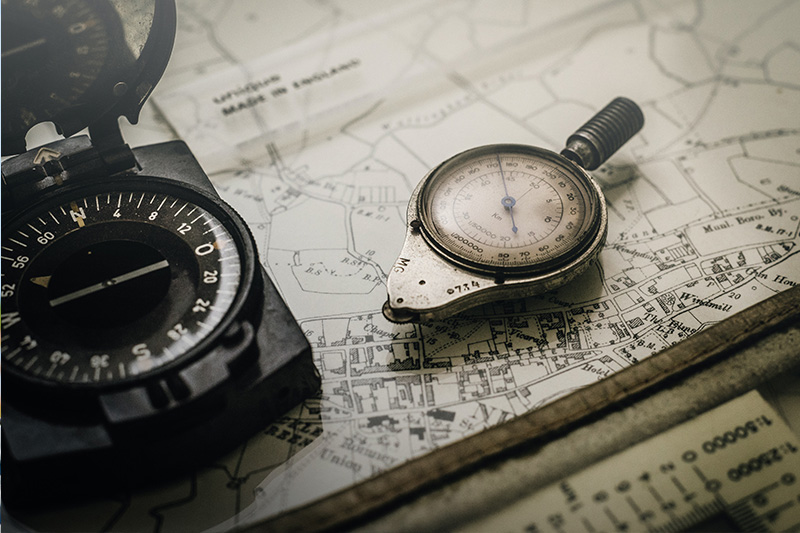
No matter how well you know the area or terrain, mistakes can be made. Never leave home without navigation tools, including a GPS unit with cellular or satellite coverage, a map, and a compass.
“It’s crucial to understand your area and the cardinal direction to move to in the event of an emergency. GPS and smartphone navigation apps are a good idea, but batteries die and machines break,” Bush said. “Know how to use a map and compass. Review the map and your location before setting out. Have your map properly folded, so your location is easily referenced, and store it in a waterproof case. There are no substitutions for a printed map.”
Over-the-counter Medications
Be prepared to treat minor ailments long before they turn into an emergency. “Travelers should be well-stocked to treat colds, pain, swelling, diarrhea, constipation, cuts, and dehydration, to name a few,” Weinstein said.
Many countries require medicines to be transported in original packaging. Prescription and over-the-counter medications without packaging run the greater risk of being confiscated. The U.S. Department of State suggests checking with the foreign embassy of the country you are visiting or transiting to make sure your medications are permitted.
Parachute Cord
Parachute cord, a lightweight nylon rope originally used in parachute suspension lines, is often used as a general-purpose utility cord.
“I love this stuff,” said Pendergast, noting he often brings 25 feet with him on trips. “The uses of parachute cord are endless: clothesline, wading boot laces, making a splint or replacing an outboard motor cord.”
Pair parachute cord with a tarp for a quick shelter. “You’ll want something to protect yourself from the rain or wind if you’re lost or immobile in the wilderness,” Weinstein said.
Quality Footwear
“Anyone around water knows waders and boots are crucial,” Frank said. “You have to stay dry out there.” He recommends breathable waders and wading boots with non-felt soled and no spikes.
Jeff Callison, co-owner of Deadhorse Outfitters and Global Rescue Safe Travel partner, recommends a set of boots that fit the environment but are comfortable and capable of environmental changes. “Your feet are the most important part of your body when in the backcountry,” he said.
Don’t forget water shoes if you’re swimming, kayaking or canoeing. “Unknown bottom conditions can end a swimmer’s day very quickly if they are not properly prepared for it. When swimming in lakes, ponds, rivers, or other natural landscape bodies of water, always were shoes of some kind to protect your feet from underwater debris,” Mitcham said.
Rain Gear
“I guided and worked in Alaska for many years and, since then, I don’t leave home without a rain jacket, no matter what the weather predictions are,” said Pendergast. “In my mind, it’s the most important item in your entire kit.”
Bush agrees. “Even if rain is not in the forecast, I bring one. Why? Because if it is waterproof, it is windproof. Anything designed to keep water and wind out will keep heat in. Throwing a waterproof shell over a light fleece can form an effective cold weather solution.”
Socks
Ignoring proper foot protection is one of the easiest ways to ruin an adventure, especially if it’s a multi-day trip. “Great socks — ideally made of Merino wool — can make all the difference,” said Danielle Aronson, co-founder of travelhelix and a Global Rescue Safe Travel partner. “Smartwool socks are our go-to. They let our feet breathe when we’re working up a sweat during the day and keep us warm when it’s cold at night. Regardless of your brand preference, robust socks will ensure happy feet for a happy adventure.”
Tourniquet
“The injury that will kill you the soonest: bleeding out within minutes if you hit the right artery,” said Weinstein, a critical care paramedic with an Advanced Wilderness Life Support (AWLS) certification. “You should always have a commercially available tourniquet with you. Don’t buy the cheap ones. You want it to be combat-proven and quality made when you are trying to save a life.”
Travel Protection Services
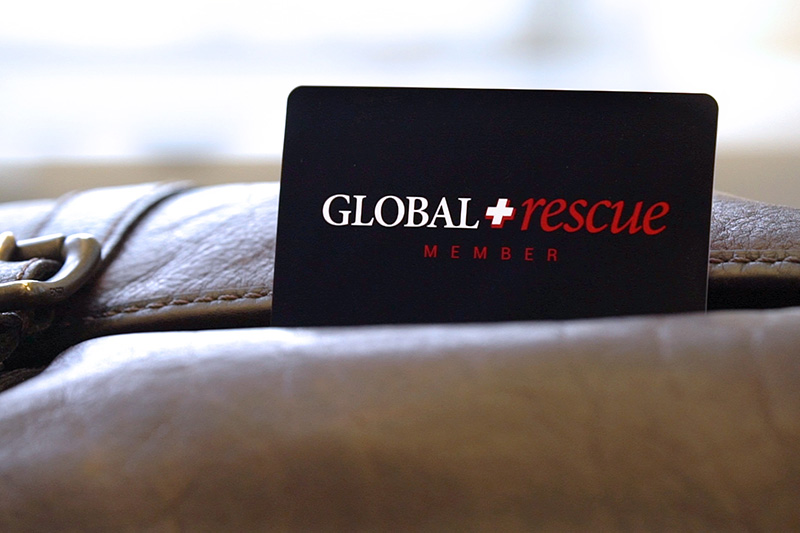
Help is just a phone call away if you have a travel protection services membership. It offers more than travel insurance, which is mainly protection for your wallet. Global Rescue is about protecting your health. When the unexpected happens during travel, Global Rescue’s team of medical and security experts help you from the point of emergency — regardless of where you are in the world.
Underwear
We’ve talked about the outer layer — a jacket — but under layers can be just as important to keep you warm, cool, or dry. Women’s Hiking Crew Adventures, a Global Rescue Safe Travel partner, recommends “eliminating all cotton, including cotton underwear, and replace it with synthetic or polyester clothing with moisture-wicking properties to avoid rashes and chafing. Cotton and other materials that absorb sweat can lead to hypothermia among other problems, so replace them as soon as you can. Synthetic underwear can be a bit pricey, but worth it, especially since they are quick drying.”
Vaseline
Did you know that vaseline can be used as a fire starter? A candle? A lubricant for hinges or zippers? Removing resin from your hands?
Waterproofing
“Even items ‘guaranteed waterproof’ need to be waterproofed,” Bush said. “A guarantee just means the manufacturer will replace the item if it is damaged by water. For example, a manufacturer’s guarantee for a backpack will not fix your flooded out GPS three days into a nine-day wilderness trip.”
Keaveny will line his backpack with a heavy-duty trash bag and cover it with a pack cover on wet days. Bush will store items needing protection in a zip-lock bag, then in a waterproof sack, then in a standard backpack.
“The only truly waterproof backpacks are dry bags, and dry bags can’t replace a conventional backpack,” Bush said, “but there are dry bags you can put in a backpack for a maritime transit.”
X-tra Copies
Make color copies of your passport, any visas, and driver’s license. Keep a copy with you, separate from your passport, and keep a copy at your office or with friends and family. This can speed up the replacement process if it becomes necessary. In today’s travel world, you’ll also want documentation of a negative PCR test and vaccination certification and make extra copies of those as well.
Yellow Card
If you’re traveling to a country with a high risk of yellow fever (mainly equatorial Africa), you’re going to want to bring your Yellow Card, a paper certification of vaccination issued by national health agencies and enforced by The World Health Organization. Yellow fever is a mosquito-borne viral disease and vaccination is required for travel to many tropical and subtropical areas.
A vaccine may not be required for entry, but Global Rescue medical experts suggest researching health risks in your destination country.
“Many countries may have certain viruses or parasites you should protect yourself against — even if it is not required on entry. Typhoid fever, Japanese encephalitis, and Hepatitis A are some examples,” Keaveny said. “We highly recommend the rabies vaccine. Rabies is 100% deadly if contracted. Some countries, especially developing nations, do not have the medicines available to treat a potential exposure.”
Zip Ties
A zip tie is a thin, flexible nylon strap. One end is threaded through a locking mechanism on the other end, making it a convenient and effective tool with many uses.
“Gosh, these are so handy,” Pendergast said. “I have used zip ties to strap a reel to a rod, splint a broken finger, as a zipper pull, attach a luggage tag, and secure zippers on my duffel bag. They are light, essential, and don’t take up any room.”
26 Reasons You Need a Membership
Although you might think a travel protection membership is only for dramatic helicopter rescues from remote locations, many of our members take advantage of our in-house medical advisory services.
“We have a lot of calls about altitude and acute mountain sickness, ski injuries, sinusitis and sinus infections, and traveler’s diarrhea,” Weinstein said. “The majority of the conditions we treat are preventable if members acclimatize, take the appropriate medication and consult a doctor before traveling.”
Global Rescue’s Member Services team — full-time staffers on the job 24/7/365 — triages every call. Members with medical questions are immediately connected to the Global Rescue Medical Operations team of critical care paramedics, nurses, and physicians. The on-site team is supported by the Elite Medical Group, the Johns Hopkins Emergency Medicine Division of Special Operations, and Partners HealthCare.
No request is too small. We want you to call with questions. Asking early about a symptom or injury is an important preventative step, and it’s always good to get in front of an issue before it becomes a crisis.
Unlike other companies, the medical, security, and intelligence expertise is all in-house at Global Rescue. The operations centers are staffed by experienced nurses, paramedics, and military special operations veterans. Experts have experience with hazardous environments, peacekeeping operations, Himalayan expeditions, protection services as well as wilderness skills, and crisis response training. Global Rescue members can tap into this wealth of knowledge with every phone call.
Enroll today by clicking here.

